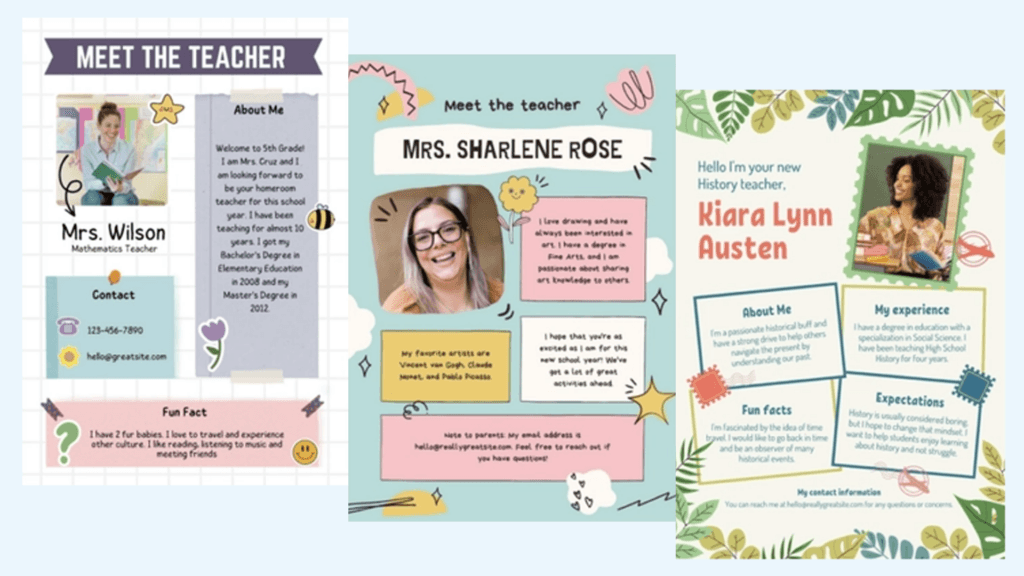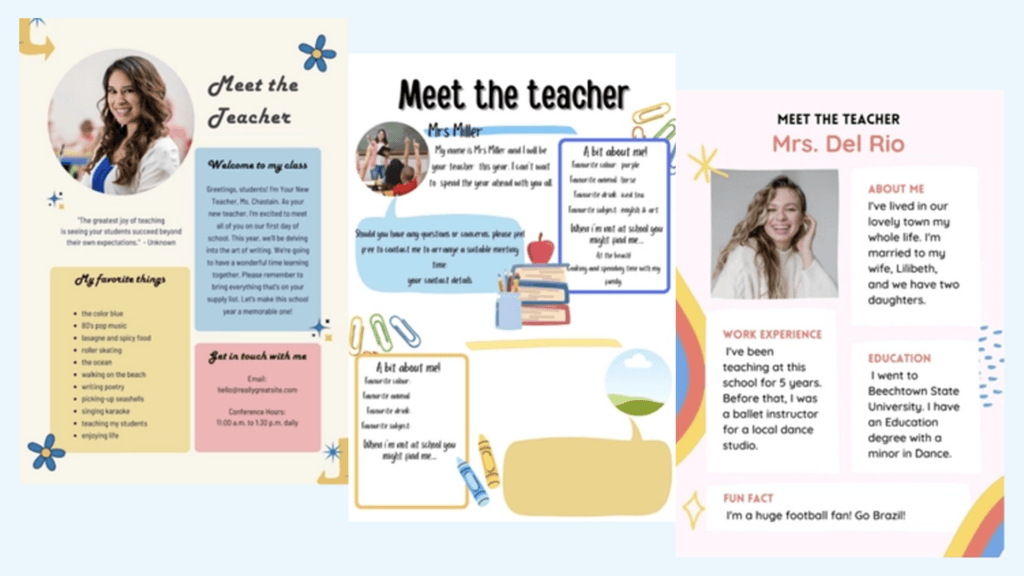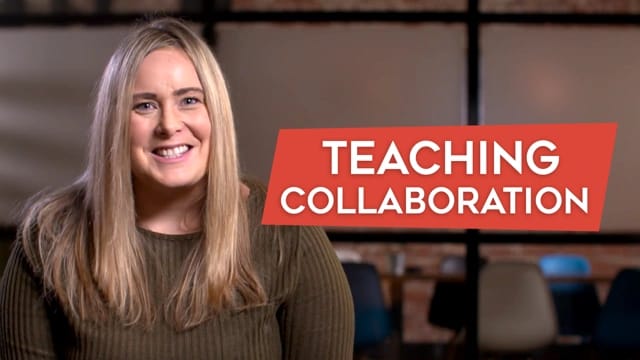6 Tips for writing a teacher introduction letter to parents
In this guide
- What are the benefits of a teacher introduction letter?
- Helpful teacher introduction tips
- Some final thoughts
- In summary
Writing an introduction letter to the parents or guardians of your students may, on the surface, seem like a simple thing, but can be overwhelming for many teachers. The key to writing an effective introduction is to share what you consider most important for parents to know in the least amount of words.
So why should you write an introduction letter to parents? The main reason is to inform parents who their child will be spending the school year with as well as to engage and invite them to be active participants in their child’s school journey.
What are the benefits of a teacher introduction letter?
- It is the first opportunity to make both your students and their parents/guardians feel comfortable and allay their worries.
- Your letter can set the tone for the school year while giving parents a sense of your personality.
- Create a connection before the school year starts and before the back-to-school night as there is no time during an open house.
- You can foster a sense of community and build rapport.
- Give your parents a visual idea of the space where their child will be learning.
- Make students feel valued.
Helpful teacher introduction tips
1) An introduction letter must:
- Say who you are with an ‘about me’ section. Share your background, training, and skills (these will help put parents at ease).
- Show what your leadership style is as well as your school year priorities.
- Include contact details aligned with your school’s policies. At a minimum, include your email and school phone number. Include classroom portal links.
- Encourage two-way communication, make sure you include your availability along with your contact details.
- Remind parents that questions are welcome.
2) What to include to show who you are:
- Tell them why you are a teacher.
- Explain your teaching style/education philosophy. This is another element that reassures your parents.
- If you are a newer teacher, sidestep credentials with why you love to teach, your favourite subject to teach, and a teaching principle that speaks to you.
- Include as much or as little personal information as you feel comfortable with without oversharing. What are your passions? Add a joke a riddle, or a favourite quote. Share your favourites. Food, movies, season, colour, songs, etc.
3) What to include in an introduction letter
Before you think about the bells and whistles, decide what you want to add. Add value without too much information.
Letter design and layout
Address each letter personally with the name of the parents and the child.
- Introduce yourself first. This is the first connection between you and the parents.
- Give your letter a KISS – Keep It Simple and Succinct. The purpose is to say hello and share important information. Keep your words simple, keep the letter easy to read. Use short paragraphs and bullet points.
- The design and focus of your letter sets the tone for the school year. Think of how your letter will show your personality.
- Headings are important to easily identify information.
- A simple font and colour make it easy to read.
- Use bolds and italics for important information like deadlines and names.
- If you are sending a digital letter, create a subject line that is compelling and that attracts attention.
- Everyone likes photos – make sure you include your photo. You can also include photos of your family or pets.
Paper vs digital or both?
Be aware that, in some school districts, not all parents have computers in the house. Sending both paper and digital introductions will make sure that no one is missed.
4) Example parent introduction letters
Here are some sample parent introduction letters to inspire you:

5) There are a few Do’s and Don’ts to keep in mind along the way
DO
- Add value and key information.
- Speak from your heart.
- Be enthusiastic and show who you are. Show your passion for teaching!
- End on a positive note.
- Connect parents to the learning process and reinforce the importance of their role and the ways they can contribute.
DON’T
- Overwhelm with too much information!

6) Some great tips from teachers
- Ask parents for a letter in return. Remind parents that you are a team. Encourage them to share info about their child. What makes their child tick? What are their fears? What calms them down when they are upset? Ask them to share stories about what makes them special.
- If you are tech-savvy, consider adding a QR code that links to an audio version of your letter, a video that links to your classroom website, classroom information, or a list of supplies.
- A fancy letter isn’t necessary, especially if it doesn’t reflect your personality but if you are creative, your creativity will show parents that you will go the extra mile for their child.
- Show the magic of your classroom and how you nurture creativity and promote learning.
- Consider adding a reference sheet or a checklist of important information.
- Send your letter out in enough time before the start of the school year.
Some final thoughts
As a teacher, I have found that all parents, no matter the age of their child, want assurances in a few main areas. They want to know:
- That you are both competent and qualified to manage the class and teach effectively.
- You will be aware of and nurture their child’s individual needs including talents as well as learning and behavioural challenges.
- You will help their child thrive both socially and academically.
- Your educational approach and methods align with their child’s learning style.
- The classroom provides a physically and emotionally safe environment.
- You will be accessible and communicative, providing information about their child’s progress, and are responsive to emails and phone calls.
- You recognise they are the expert about their child and can give you insights that academic scores can’t.
In summary
There are many ways to create your parent introduction letter. It’s obvious you don’t need to nor should you use all of these tips but, hopefully, some of them will resonate with you. The age of your students and your teaching style will influence the way you write your letter. Ultimately, it is important to convey to the parents and your students that you are there to make sure that they will have a positive experience throughout the school year.
Resources
- Jones, C. (2021, October 19). Stanford study finds why writing a letter to a teacher can turn around the lives of some students. EdSource. https://edsource.org/2021/for-some-students-simply-writing-a-letter-to-a-teacher-can-turn-their-lives-around-study-finds/662588

Annette Geiger
briefcase iconLanguage Coach / Content Creator
Annette has been teaching English as a Second Language since 2005. She has also created course content for educational publishers around the world. Today, she tutors primary age school children as well as language and soft skills for adult learners.
Other posts
Want more content like this?
Subscribe for blog updates, monthly video releases, trending topics, and exclusive content delivered straight to your inbox.










